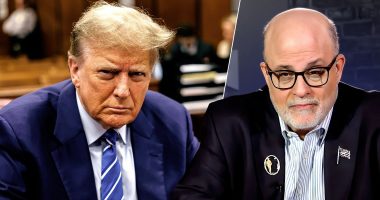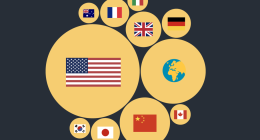Steven B. Kamin is a senior fellow at the American Enterprise Institute and former director of the International Finance Division at the Federal Reserve Board. Mark Sobel is US Chair, Official Monetary and Financial Institutions Forum, and former deputy assistant secretary for International Monetary and Financial Policy at the US Treasury.
In the 1960s, French finance minister Valéry Giscard d’Estaing lamented the dollar’s “exorbitant privilege”, longing for an international monetary system less reliant on the dollar and the shackles of US economic policy. In 2009, Governor Zhou Xiaochuan of the People’s Bank of China called for de-dollarisation and a multipolar regime with an internationalised renminbi. Emerging markets joined the chorus, criticising the spillovers from Fed monetary policy.
But the wistful yearnings from seemingly every quarter of the world for the emergence of a non-dollar alternative system miss the point. Instead of reimagining the international monetary system, the focus should be on strengthening the underlying drivers and dynamics of the global economy.
What can one conclude from the 60 years of critiques? Plus ça change, plus c’est la même chose.
Why is the dollar the world’s dominant currency, and why will it likely remain so for the foreseeable future? As discussed in our recent review of this issue, the answer is hardly novel. The US economy is huge, some 25 per cent of global GDP. It is also more innovative, entrepreneurial, and faster-growing than nearly all its advanced-economy counterparts. America’s financial markets are the deepest, most liquid and open in the world. Rule of law is strong, with investor protections that apply to residents and foreigners alike.
The dollar network is global, which in turn reinforces its ability to fulfil the functions of a global currency — it’s a unit of account, a medium of exchange and a store of value, with nearly 60 per cent of global reserves in dollars. Other currency contenders are mere pretenders.
The euro’s impact is more regional than global with its reserve share hovering around 20 per cent since its inception. Europe’s economy isn’t as dynamic as America’s; but there is no pan-European safe asset; capital markets union flounders.
Much attention focuses on the renminbi. China, too, is huge. It is building out an international payments infrastructure free of the dollar (CIPS), is a leader in creating a digital central bank currency, and over a quarter of China’s trade is now settled in RMB. But a stronger medium of exchange function won’t make the RMB a suitable store of value. The RMB isn’t convertible; capital controls abound; financial markets have far to go in their evolution; and the state’s visible hand is omnipresent and mercurial.
In consequence, the RMB accounts for only 3 per cent of global reserves.
Some argue that crypto assets may help free the international monetary system from the dollar. Balderdash. Key stablecoins are pegged to the dollar. Watching other crypto assets prices fluctuate gives one a case of vertigo, the antithesis of a store of value.
Others argue that US use of financial sanctions — weaponisation — will tank the dollar. Indeed, if the US unilaterally deploys sanctions at every turn, let alone extraterritorially, that could certainly accelerate dollar demise. But if the US imposes financial sanctions multilaterally, in concert with our allies — for example, blocking Russian central bank and oligarch assets — any fallout should be small. After all, some three-quarters of foreign government holdings of US safe assets are held by countries with some form of military tie to the US.
By the way, the exorbitant privilege isn’t exorbitant. If it were, others would seek a piece of the action. Yes, Americans are largely shielded from exchange risk, the Fed gets a few billion dollars of seignorage and US rates are arguably somewhat lower — though US real yields are little different than others. The heightened capital inflow associated with dominance bids the dollar higher, which helps a tad on inflation, but also hurts jobs and exports, generating protectionist forces authorities have long contended with.
The above analysis is fairly standard. But why then do we argue that the debate about a possible future reduction in the dollar’s global role misses the point? Because the key issue is not whether the dollar’s global role declines, but why.
In a benign scenario, the US runs sound financial, trade, and macroeconomic policies, including beginning the gradual process of bringing its fiscal house in order. Key surplus economies such as Germany and China boost domestic sources of growth. Europe and China strengthen their financial markets, enhancing their depth and liquidity. In an environment of solid global growth, reduced risk, and ongoing brisk financial innovation, we might see diversification away from the dollar for payments and reserves and into the currencies of other stable economies. But the world economy and financial system will be better balanced and more robust, and the US will be better off as a result.
The malign scenario is far more worrisome and disruptive. The world fragments into blocs amid substantially rising protectionism. US political dysfunction continues to run amok. The US fails to tackle its unsustainable fiscal path and politicians compromise the Fed’s independence and policies, subordinating the central bank to fiscal dominance. America ratchets up the use of unilateral financial sanctions. It acts as an increasingly unreliable partner abroad. It threatens to devalue the dollar, raising the haunting memories of the beggar-thy-neighbour currency policies of the 1930s. It undermines the very properties that have led to dollar dominance. The dollar’s global role would plunge and market disorder and volatility would explode. The malign scenario would be enormously harmful to global prosperity, including America’s.
The global debate on the future of dollar dominance misses the point because it doesn’t focus on how the dollar’s future will evolve. Instead of the debate focusing on the euro, RMB, CBDCs, stablecoins, payments systems etc as alternatives, the malign scenario highlights the real issue — the US needs to look into the mirror. If the US doesn’t keep its house in better order, dollar dominance will be the least of our worries.
Also Read More: World News | Entertainment News | Celeb News









